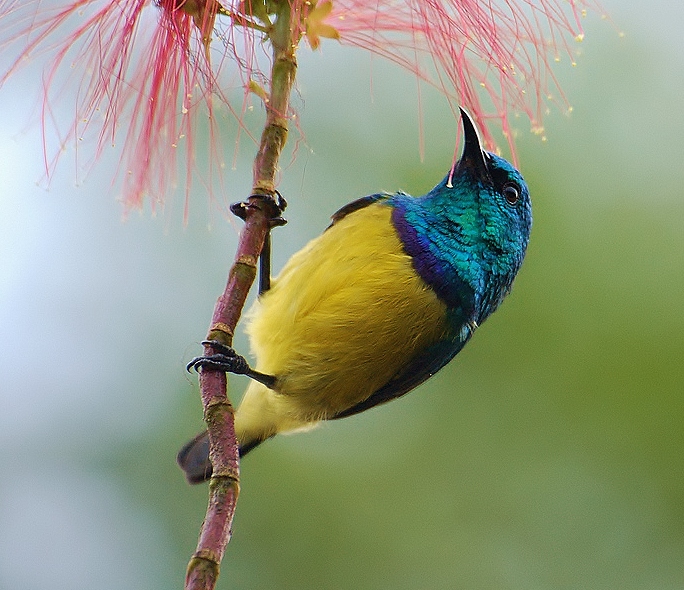 |
| Photo by Sergi Aris (Flickr) |
Common name:
collared sunbird (en); beija-flor-de-colar (pt); souimanga à collier (fr); suimanga acollarado (es); waldnektarvogel (de)
Taxonomy:
Order Passeriformes
Family Nectariniidae
Range:
This species is found in sub-Saharan Africa, from Senegal to Ethiopia and south to Angola, northern Botswana, and through Mozambique down to eastern South Africa.
Size:
These birds are 9-10 cm long and weigh 7 g.
Habitat:
The collared sunbird is mostly found in mountain, coastal and lowland evergreen forests, in swamp forests, and also in thorny savannas, scrublands and gardens near forest edges. They can also be found in plantations and near fresh water wetlands.
Diet:
They mainly feed on the nectar of a wide range of plants, and also take some fruits and invertebrates such as termites, ant pupae, spiders and snails.
Breeding:
Collared sunbirds breed all year round. The female builds the nest alone, an untidy oval-shaped structure with a side entrance, made of dry grass, rootlets, twigs, tendrils and leaves bound together with spider webs. The nest is lined with plant fibres, horse hair, rootlets and feathers and is typically strung from the outer foliage of a sapling, scrub or creeper, often near a wasp nest. The female lays 1-4 eggs, which she incubates alone for 12-14 days. The chicks are mainly fed by the female and fledge 13-17 days after hatching, but only become fully independent 3-4 weeks later.
Conservation:
IUCN status – LC (Least Concern)
This species has a very large breeding range and is reported to be common to abundant throughout this range. The population is suspected to be stable in the absence of evidence for any declines or substantial threats.







